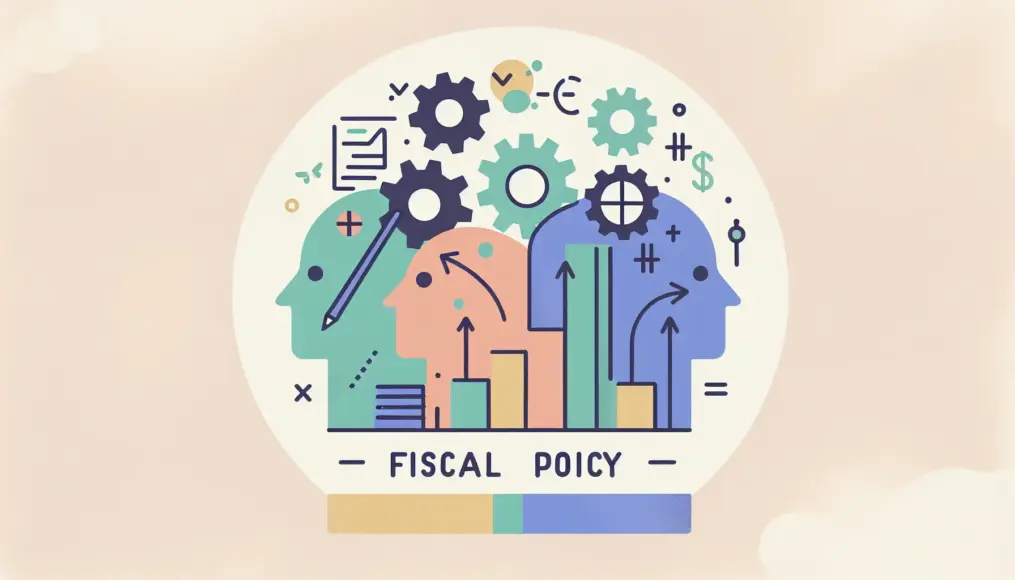Looking back at Japan’s fiscal reconstruction can offer us valuable insights into how the country has navigated its financial challenges over the decades. From the post-war economic boom to the struggles following the bubble burst, Japan’s approach to finance and policy has evolved significantly. This article explores the key moments in Japan’s fiscal history and examines what successful cases can teach us about tackling modern financial issues.
As we dive into the stories of past reconstruction efforts, we will uncover the lessons learned from both triumphs and setbacks. Understanding these historical contexts not only helps us appreciate the complexity of fiscal policies but also encourages us to think critically about their implications for today’s economy. By reflecting on Japan’s past, we can better prepare for the future.
Join me on this journey as we explore Japan’s fiscal reconstruction, highlighting the successes, challenges, and the role we all play in shaping a sustainable financial future. Let’s learn from history to build a better tomorrow.
- Discover the historical background of Japan’s financial reconstruction.
- Learn key attempts at fiscal recovery and their outcomes.
- Explore lessons from past successes and how they apply to today’s issues.
Historical Background of Financial Reconstruction
Post-war Economic Situation
After World War II, Japan faced an enormous economic crisis. The nation was left in ruins, with infrastructure destroyed and a struggling workforce. However, this challenging environment also set the stage for remarkable resilience and recovery. The government and the people worked tirelessly to rebuild their lives and economy, often relying on innovative approaches to finance and policy.
In the initial years following the war, the country experienced severe shortages of basic goods and services. This situation prompted creative solutions, such as the introduction of a series of economic policies aimed at stimulating growth. By understanding these early challenges and responses, we can appreciate the foundation upon which Japan’s later fiscal reconstruction efforts were built.
- The economic devastation after World War II.
- Innovative government policies emerged during this period.
- The resilience of the Japanese people played a crucial role in recovery.
Early Reconstruction Policies
As Japan began its journey towards recovery, various reconstruction policies were implemented to stabilize the economy. The U.S. played a significant role through financial aid, most notably the Marshall Plan, which provided essential funding for rebuilding efforts. This support was crucial in laying the groundwork for Japan’s rapid economic growth in the ensuing decades.
The Japanese government focused on key sectors such as manufacturing, agriculture, and infrastructure. Policies aimed at promoting industrialization not only created jobs but also positioned Japan as a competitive player in the global market. However, the path wasn’t always smooth. There were numerous challenges, including inflation and labor disputes, which required constant adjustment of strategies.
Moreover, these early policies highlighted the importance of collaboration between the government, businesses, and labor. This collaborative spirit became a hallmark of Japan’s economic strategy and continued to influence its fiscal policies in the years to come. As we reflect on these early reconstruction efforts, it’s clear they were instrumental in shaping Japan’s financial landscape.

For those interested in delving deeper into the intricacies of fiscal policies, you might find our article on What is Fiscal Reconstruction? Discover Steps and Strategies for Success! particularly enlightening. It explores the essential steps and strategies that lead to successful fiscal reconstruction, providing valuable insights that relate closely to Japan’s historical economic recovery efforts.
- U.S. financial aid through the Marshall Plan was crucial.
- Key sectors were prioritized for industrial growth.
- Challenges such as inflation required ongoing policy adjustments.
- Collaboration among government, businesses, and labor was vital for success.
Key Attempts at Financial Reconstruction
Response After the Bubble Burst
The late 1980s marked a period of economic exuberance in Japan, characterized by an asset bubble that eventually burst in the early 1990s. This event led to a prolonged period of economic stagnation, often referred to as the “Lost Decade.” During this time, the government faced significant challenges in addressing the fallout from the bubble’s collapse. One of the primary responses was to implement aggressive monetary policies aimed at stimulating the economy.
In an effort to revive consumer confidence and encourage spending, interest rates were slashed to historic lows. Additionally, the government introduced various stimulus packages to support struggling industries and mitigate the effects of the recession. This period highlighted the importance of adaptability in fiscal policy, as Japan had to navigate uncharted waters while learning from the mistakes of the past.
- The asset bubble of the late 1980s and its consequences.
- Aggressive monetary policies were introduced to stimulate growth.
- The importance of consumer confidence during economic recovery.
Review of Public Works
As Japan worked to recover from the economic downturn, public works projects became a cornerstone of its financial reconstruction strategy. The government recognized that investing in infrastructure not only created jobs but also laid the groundwork for future economic growth. This approach was particularly evident in the late 1990s and early 2000s when large-scale construction projects aimed at revitalizing urban areas were initiated.
These public works projects served multiple purposes. They provided immediate employment opportunities, which helped to reduce the unemployment rate, while also improving the nation’s infrastructure. Highways, bridges, and public transportation systems were developed during this time, enhancing connectivity across regions. However, the effectiveness of these projects has been a subject of debate. Critics argue that some investments lacked long-term vision and resulted in wasted resources.
In addition to creating jobs and improving infrastructure, these projects also sparked discussions about the role of government in economic recovery. Should the government take the lead in rebuilding the economy, or should private sectors have a more significant influence? This ongoing dialogue continues to shape Japan’s fiscal policies today, as the country seeks to balance public and private interests in its reconstruction efforts.

For those intrigued by the financial strategies employed during Japan’s economic recovery, you might find it beneficial to explore our article on What is Fiscal Reconstruction? Exploring Japan’s Challenges and Solutions!, which delves into specific methods and ongoing challenges surrounding fiscal policy in Japan. This article complements our discussion on public works and government responses, providing a deeper understanding of the broader economic context.
- Public works projects were crucial in job creation and infrastructure development.
- Investments aimed to improve nationwide connectivity.
- The debate over government versus private sector roles in economic recovery persists.
Success Stories and Their Lessons
Historical Success Cases
Throughout Japan’s fiscal reconstruction journey, there have been notable success stories that highlight effective strategies in overcoming financial challenges. One prime example is the rapid recovery following the devastation of World War II. The government implemented innovative finance policies, focusing on collaboration between public and private sectors. This partnership was pivotal in generating economic momentum and restoring public trust.
Another significant success occurred during the post-bubble period when Japan faced prolonged economic stagnation. The government adopted aggressive monetary policies that helped stabilize the economy. By reducing interest rates and investing in public works projects, Japan managed to create jobs and improve infrastructure, which laid the groundwork for future growth. These examples showcase how adaptive strategies can lead to remarkable recoveries even in the face of adversity.
Reflecting on these success stories allows us to appreciate the importance of resilience and adaptability in finance and reconstruction efforts. Each of these cases emphasizes the need for a proactive approach to economic challenges, demonstrating that timely interventions can yield positive results in rebuilding a nation’s financial health.
- Japan’s recovery after World War II showcased effective finance policies.
- Public-private partnerships were essential for generating economic momentum.
- Adaptability in strategies can lead to successful outcomes, even during difficult times.
Application to Modern Issues
As we consider the lessons from Japan’s historical successes, it’s crucial to apply these insights to modern financial issues. For instance, the current global economic landscape is facing unprecedented challenges, such as inflation and supply chain disruptions. Learning from Japan’s past can guide policymakers in crafting effective responses to these contemporary dilemmas.
One key takeaway is the significance of collaboration between government and private sectors. In today’s complex economy, fostering partnerships can lead to innovative solutions that address pressing financial crises. By bringing together diverse perspectives, stakeholders can develop comprehensive strategies that not only stabilize the economy but also promote sustainable growth.
Additionally, Japan’s experience with public works projects offers valuable lessons. While these initiatives were instrumental in job creation, it’s essential to ensure that investments are made with a long-term vision. Policymakers should prioritize projects that not only generate immediate employment but also enhance infrastructure for future generations. This forward-thinking approach can help prevent resource wastage and ensure that economic recovery efforts are effective and meaningful.
Ultimately, by applying the lessons learned from Japan’s fiscal reconstruction history, we can navigate today’s financial challenges more effectively. As we move forward, let’s continue to explore how these insights can shape a more resilient and prosperous economic future for all.
- Collaboration between government and private sectors can lead to innovative solutions.
- Public works projects should focus on long-term benefits for sustainable growth.
- Learning from past successes can guide effective responses to modern financial issues.
- A proactive approach is essential for navigating today’s economic challenges.
Future Prospects and Challenges
Future Directions of Fiscal Policy
As we look ahead, the future of Japan’s fiscal policy will be shaped by several emerging trends and challenges. The ongoing global economic shifts, influenced by technological advancements and changing demographics, require a fresh approach to finance and reconstruction strategies. Policymakers will need to be proactive in adapting to these changes while remaining committed to sustainable growth.
One of the key areas to focus on is the integration of digital technologies into fiscal policies. Embracing innovations such as blockchain and artificial intelligence can enhance efficiency and transparency in government spending. By leveraging these tools, Japan can better allocate resources and improve public trust in financial governance. Moreover, this digital transformation can pave the way for new economic opportunities in various sectors.
Additionally, addressing social issues such as income inequality and an aging population will be vital for shaping fiscal policies. Implementing measures that promote inclusivity and equal opportunities can strengthen the economy as a whole. By considering the needs of all citizens, Japan can foster a more resilient society capable of navigating future challenges.
- Embracing digital technologies can enhance efficiency in fiscal policies.
- Addressing income inequality is crucial for sustainable growth.
- A focus on inclusivity strengthens the economy as a whole.
Role and Expectations of Citizens
The role of citizens in shaping Japan’s fiscal future cannot be overstated. As stakeholders in the economy, their involvement is essential for creating a balanced and effective financial reconstruction strategy. Citizens have the power to influence fiscal policies through civic engagement and active participation in discussions about financial governance.
One way citizens can contribute is by staying informed about fiscal matters and advocating for policies that promote transparency and accountability. By voicing their opinions and expectations, individuals can help ensure that government decisions align with the needs of the community. This active participation fosters a sense of ownership and responsibility towards the nation’s financial health.
Moreover, citizens can play a pivotal role in supporting sustainable practices that contribute to long-term economic stability. By making informed choices in their daily lives—such as supporting local businesses or advocating for eco-friendly policies—they can influence market trends and promote a culture of sustainability. This collective effort can significantly impact Japan’s fiscal future, ultimately leading to a stronger and more resilient economy.
In conclusion, as we reflect on the past and look toward the future, the collaboration between government and citizens emerges as a cornerstone of effective fiscal reconstruction. Together, they can navigate the complexities of modern finance, ensuring that Japan remains on a path toward prosperity and resilience.

If you’re interested in understanding how Japan’s economic policies influence its future, you might find our article on How Do Bank of Japan’s Policies Impact the Economy? particularly insightful. It delves into the effects of monetary easing and interest rate policies, shedding light on how these strategies contribute to economic growth and inflation.
- Citizens can influence fiscal policies through engagement and advocacy.
- Staying informed promotes transparency and accountability in governance.
- Supporting sustainable practices fosters long-term economic stability.
- Collaboration between government and citizens is essential for fiscal success.
Summary
In reflecting on Japan’s journey through fiscal reconstruction, it becomes evident that the interplay of finance and effective policy has been pivotal for the nation’s recovery. From the early post-war years to the challenges faced after the bubble burst, Japan’s adaptive strategies provide us with a roadmap for addressing contemporary financial issues. As we look to the future, the lessons learned from history encourage us to champion collaboration between government and citizens, ensuring a collective approach to sustainable growth.
Moreover, the importance of innovative solutions, such as leveraging digital technologies and focusing on long-term infrastructure investments, cannot be overstated. These strategies not only promote immediate recovery but also lay the groundwork for a resilient economy that can withstand future challenges. By embracing inclusivity and transparency, Japan can foster a financial environment that is supportive of all its citizens.
As we continue to navigate the complexities of modern finance, let us carry forward the insights gleaned from Japan’s past. Together, through collaboration and informed decision-making, we can work towards a prosperous and stable economic future.
- Japan’s fiscal reconstruction showcases the importance of adaptive financial policies.
- Collaboration between government and citizens is essential for sustainable growth.
- Innovative solutions and long-term investments are key to building a resilient economy.
I encourage you to share your thoughts on Japan’s fiscal history and its relevance to today’s economic challenges. What insights do you find most valuable, and how can we apply them to our own financial situations?



Comment